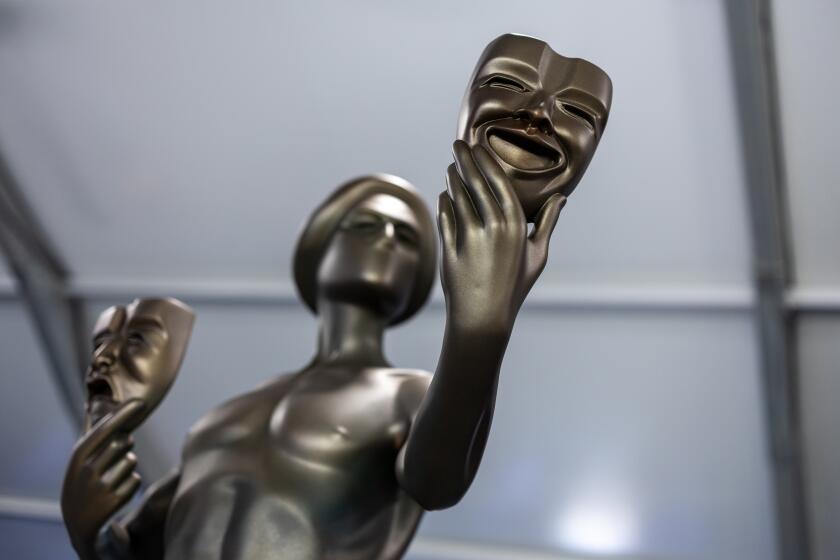How ‘Chinese’ will Shanghai Disney be?
- Share via
Reporting from Shanghai — The mantra for Disney executives working on the company’s $5.5-billion Shanghai Disney resort has, for years, been to create something both “authentically Disney and distinctly Chinese.” On Wednesday, as Disney Chairman and Chief Executive Bob Iger unveiled a huge scale model for the media in Shanghai, he said he believed the company had attained the “perfect balance.”
But how exactly is Disney bringing in Chinese elements? And how is the park -- opening next year -- going to be specifically geared to mainland visitors, without alienating foreign guests?
Ten years ago, the company opened Hong Kong Disneyland, which incorporated a number of Chinese elements including feng shui into its design and sought to cater to local clientele with Chinese food and other services. But it encountered a number of well-publicized problems, including long lines on Chinese holidays and a brouhaha over whether to serve shark’s fin soup (it eventually opted not to, after an outcry from environmentalists).
Disney executives say they’ve learned from those experiences. Bob Weis, executive vice president of Walt Disney Imagineering, said employees made research trips all over China to look at architecture, visited Chinese schools and homes, and conducted online and in-person focus groups to test ideas. Executives from Disney and the Chinese state-owned investment consortium Shanghai Shendi then tussled over concepts.
“There’s always challenges for having a vision for what you think the audience will love and then you have to balance that with testing that,” he said. “A big part of our process is involved with our Shendi partners, who made multiple visits to California … to literally argue the design back and forth.”
Only when the gates are thrown open next year will planners know if they chose properly. Among the decisions: Unlike in Hong Kong Disneyland, there’s no Main Street U.S.A. (which probably wouldn’t sit well with mainland authorities sensitive about excessive American cultural influence in China).
Instead, visitors will enter the park via something unprecedented called Mickey Avenue, which will introduce classic Disney characters to Chinese guests who might not be as familiar with their back stories. Though Disney has had considerable success importing its films into China in recent years, a portion of the general public is still unclear on just what characters are in the Disney universe. (“We don’t want people wandering around asking where the ‘Transformers’ ride is,” said one employee by way of example.)
There are no planned roller-coasters or other major rides based solely on Chinese stories or cultural elements, but the park’s architecture aims to nod to Chinese tastes in various ways.
A Garden of Twelve Friends, based on the dozen animals of the Chinese zodiac, associates various Disney and Pixar characters with the signs. (Imagineers had to dig deep for some -- for the year of the sheep, for example, they found the Jolly Holiday Lambs from “Mary Poppins.”)
A version of the Soarin’ Over California ride from Disney’s California Adventure park will be called Soaring Over the Horizon, and feature scenes of the Shanghai skyline and the Great Wall.
Disneytown, the Downtown Disney-like shopping district outside the park gates, will have some “Shikumen” style architectural features common in Shanghai’s old lane houses. Hotels will have typical Chinese amenities such as slippers and teakettles, along with Chinese board games and opportunities to practice calligraphy.
Near the Enchanted Storybook Castle, a restaurant called Wandering Moon Teahouse will, designers say, “honor the restless, creative spirit of China’s wandering poets” and serve Chinese cuisine. As for the castle itself, some of its flourishes are subtly Chinese -- like a peony-topped golden finial and another one featuring Chinese cloud patterns and lotus and magnolia flowers.
Inside the castle, on the Voyage to the Crystal Grotto ride, visitors will encounter the tales of various Disney princesses, including the Chinese character Mulan and her dragon, Mushu.
Some of the incorporations are unexpected. For instance, a live Tarzan-themed show will incorporate Chinese acrobats. Others may be simply convenient. Riders of the Tron Lightcycle Power Run will be told that Sam Flynn, the main character in the film, chose Shanghai as a location for a portal between Earth and his computer world.
“We really endeavored to find an incorporation that feels natural … the Chinese design elements and Chinese performance traditions that we’ve incorporated to tell these Disney stories – they’re the right way to tell these Disney stories,” said Matt Almos, executive creative director, Walt Disney Imagineering creative entertainment. “They’re not just a Chinese way, they’re a good way, they’re an exciting way.”
About 48% of Hong Kong Disneyland’s 7.5 million visitors last year were from mainland China. Asked if the opening of Shanghai Disney might suck visitors away from Hong Kong Disneyland and whether Imagineers had sought to differentiate the two parks, Weis said he wasn’t worried.
“The best analogy for us is in the United States, Disneyland in Anaheim … and Disney World [in Florida], on two different sides of the country. That’s similar in distance to Hong Kong and Shanghai,” he said.
“There is a certain amount of the fan base that insists on visiting both, but for the most part they draw from the regions they’re located in. So we see the advantage in having a park in Shanghai to draw from this region, and [in the meantime] continuing to develop Hong Kong and invest in new attractions,” such as an Iron Man ride currently in the works.
Weis added that in some cases, the opening of one park has boosted attendance at other resorts simply due to a spillover publicity effect. “We think it’s very synergistic to have the two,” he said.
Follow @JulieMakLAT for news from China
More to Read
From the Oscars to the Emmys.
Get the Envelope newsletter for exclusive awards season coverage, behind-the-scenes stories from the Envelope podcast and columnist Glenn Whipp’s must-read analysis.
You may occasionally receive promotional content from the Los Angeles Times.









